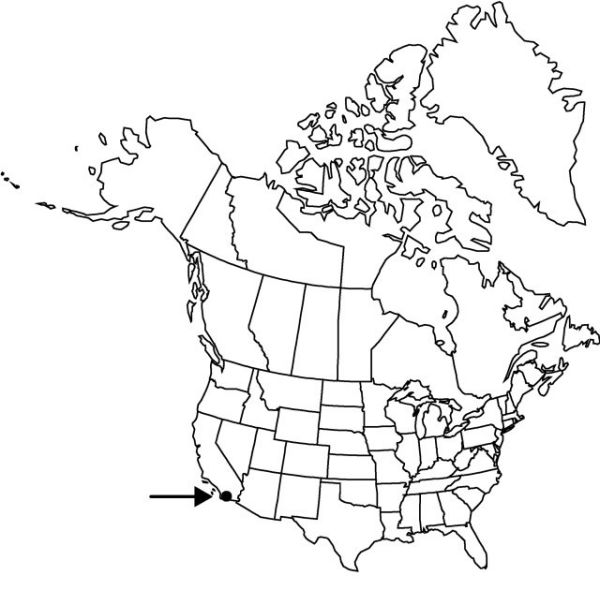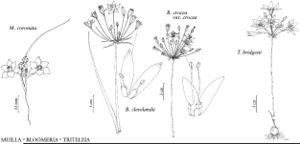Bloomeria clevelandii
Proc. Amer. Acad. Arts 20: 376. 1885.
Leaves 2–8, 6–15 cm × 1–3 mm. Scape 15–70 cm, minutely scabrous. Flowers: tepals abruptly spreading from base, distinct, yellow with green midvein, 5–10 mm; filaments leaning away from style, leaving dilated bases separated and therefore not forming nectariferous cup, 3–5 mm; anthers 0.4–1 mm; ovary 2–3 mm; style 2–3 mm, equal to or shorter than ovary; pedicel 0.5–6.5 cm.
Phenology: Flowering spring (Apr–Jun).
Habitat: Coastal scrub
Elevation: 0–100 m
Distribution

Calif., n Mexico (Baja California).
Discussion
Bloomeria clevelandii is restricted to western San Diego County and northern Baja California. Recent evidence suggests that this species is not closely related to Muilla, but rather to Bloomeria and Triteleia, and probably should be placed in a separate, monotypic genus (J. C. Pires 2000). Previous taxonomic keys have focused on the shape of the dilated filament bases, but the orientation of the stamens and the unfused filament bases are more reliably diagnostic.
The species is in cultivation, and the corms were probably eaten by native Americans.
of conservation concern
Selected References
None.
